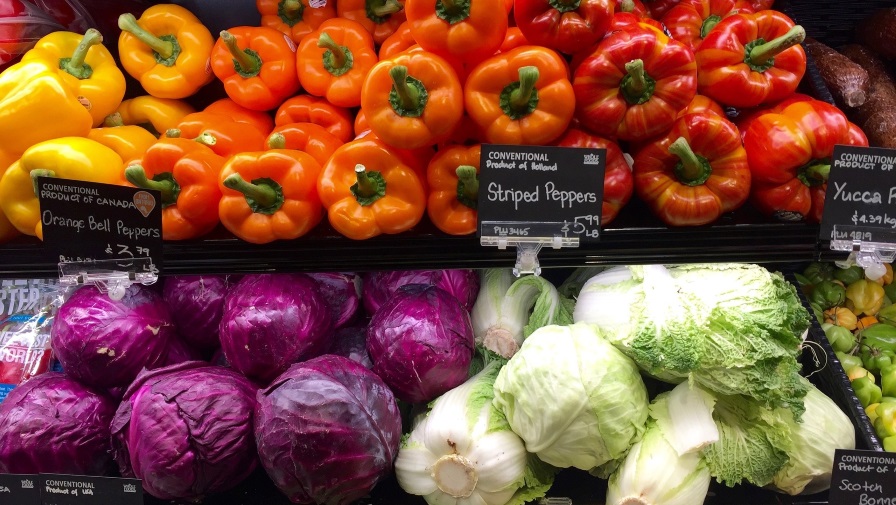Field Scouting Guide: Black Rot of Brassicas

You can easily mistaken black rot symptoms for other maladies or even drought stress. Photo by Margaret McGrath.
We reached out to leading plant pathologists to learn how to spot and treat Xanthomonas campestris (black rot of brassicas). This month, our contributors: are Steven T. Koike, University of California Cooperative Extension; Joe Nunez, UC Cooperative Extension; Anthony P. (Tony) Keinath, Ph.D., Clemson University Coastal Research & Education Center; Lindsey J. du Toit, Ph.D., Washington State University Mount Vernon NWREC; and Margaret Tuttle McGrath, Cornell University.
Black Rot of Brassicas
- Scientific name: Xanthomonas campestris pathovar campestris
- Crops affected: All cultivated brassicas, including radish and any related weeds
- Geographical Range: Worldwide, but the pathogen thrives in warm and humid climates. This problem is most serious in tropical and subtropical areas.
Black Rot’s Impact
The disease, while devastating to farmers once it takes hold, is most detrimental in humid climates or operations where moisture that accumulates on the outside of the plant doesn’t fully dry. This is a common problem when using overhead irrigation systems. As the experts explain below, it has a bigger impact on some crops than others.
Koike: Black rot usually is of low importance in California, though periodic outbreaks can cause economic losses. For example, there were recent concerns about black rot developments in some cauliflower and Brussels sprout plantings that are irrigated with sprinklers. The disease can become a problem at any stage.
Keinath: Black rot occurs periodically in South Carolina — particularly in the center of the state — and in nearby states. It can have serious economic consequences on collard and kale because the disease affects the harvested part of the crop. If the leaf spots are only on the wrapper leaves of cabbage or on the leaves of broccoli, then the heads may still be harvestable.
Although cauliflower is not a common crop in South Carolina, black rot also can cause losses on cauliflower because the leaves are harvested with the head. Black rot is less common on turnip and mustard greens and radishes than on heading brassicas (Brassica oleracea crops). The black rot bacterium also can spread very rapidly within a field, especially by wind-blown rain. Tropical storms in the Southeast U.S. (like Irma) in the late summer and fall can spread the bacterium across multiple counties or possibly further.
McGrath: Black rot occurs every year on Long Island where I am, and elsewhere in the Northeast. The pathogen does not readily move between farms, so it is not a problem everyone growing brassica crops will have. The economic impact depends on how favorable the disease conditions are and the crop. Fresh-market kale, for example, has a very low tolerance for the disease symptoms. A few symptoms on the outer frame leaves of cabbage, however, has no economic impact for that crop. Black rot can affect seedlings thus it is a concern throughout the growing season.
du Toit: Black rot tends to be a lot less of a problem in dryer climates. The bacterium is seed-borne, so when the disease gets into seed, it can be extremely concerning. The Pacific Northwest is a large area for seed production, which makes black rot a huge concern, even if the disease doesn’t favor the climate. There’s zero tolerance for the disease in seed. It also spreads easily. Dispersed rain and overhead irrigation create favorable conditions, and it can spread via seed and transplants — even on insects or equipment for a limited time. One of the worst economic impacts the disease can have is on yield.
How to ID the Disease
Nunez says that the black veins and necrosis of black rot are unique, and most people won’t have trouble identifying the disease if they know what to look for. Many experts agreed with respect to the disease’s distinctiveness, but added a few other plant problems they’ve seen mistakenly diagnosed as the disease.
du Toit: Plant chemical and nutrition problems can be misdiagnosed as black rot. It is important to reach out to experts to get an accurate assessment. If the disease is black rot, farmers will need to move quickly to minimize its impact.
Koike: In some cases, two other bacterial diseases may resemble black rot: bacterial leaf spot (Pseudomonas syringae pv. maculicola) and bacterial blight (Pseudomonas syringae pv. alisalensis).
McGrath: Symptoms from systemic infection could be confused with drought stress, Fusarium wilt or root damage due to an insect or root pathogen. This type of infection, however, is rare and typically characteristic black rot symptoms also develop.
Keinath: The yellowing of leaves affected with black rot could be confused with symptoms of downy mildew on brassicas. With both diseases, the yellow spots sometimes stop abruptly at a leaf vein. Typically, yellowing associated with black rot starts at the leaf margin and spreads inward in a V shape with the narrow end toward the middle of the leaf. Yellow patches due to downy mildew can be anywhere on a leaf and often start on the older leaves. On leaves with black rot, the leaf veins turn purplish black in the yellowed areas; this is a good diagnostic symptom to look for in the field.
Recommended Treatment
Preventing black rot of brassicas starts with the seed. All the experts recommend purchasing high-quality seeds from reputable sources. This means seeking out properly tested, pathogen-free seed. Growers should avoid planting brassica crops where they produced other brassicas for one to three years.
Weed control is another important step toward protecting these crops, as the disease can affect brassicas weeds (like wild radish) as well. Because chemicals, both traditional and organic, have not proven effective in curative or preventative applications, most experts cite integrated pest management procedures as a grower’s best chance to avoid getting black rot.
McGrath: Apply fungicides using a boom sprayer when foliage is dry. An airblast sprayer can disperse bacteria that are in any water that is present on the plant. Do not work in fields with wet plants as workers and equipment can spread the bacteria-contaminated water. Work in crops with no symptoms before affected crops. Clean equipment after use in an affected crop. Overhead irrigate when plants are dry; the worst time to water is when dew is present, as bacteria can be in guttation water that exudes out of hydathodes along leaf margins.
Keinath: Destroy diseased crop debris or abandoned crops as soon as possible. The bacterium will survive in crop debris until it decays, and the thick stems of heading brassicas can take more than a year to decompose. Maintaining soil moisture at field capacity during dry spells and planting a legume cover crop or disking every one or two months will speed up decomposition. Do not plant multiple or sequential plantings of brassicas next to each other. If one planting becomes diseased with black rot, it may be possible to “sacrifice” it to prevent spread to younger crops located further away. Plant tolerant cultivars of cabbage and broccoli that are recommended for your region.










